If you find yourself scanning the blue African skies, keep an eye out for a bird of prey with a commanding presence: the African Jackal Buzzard (the Latin name is Buteo Rufofuscus ). Distinguished by a robust body and broad wings, this raptor carves a striking silhouette against the sunlit backdrop.
From their majestic flight patterns to their stealthy hunting techniques, the African Jackal Buzzard is a fascinating bird that’s sure to leave you in awe. So, grab your binoculars and join me as we delve into the intriguing world of this winged marvel!
Elegance in Flight: The Striking Appearance of the African Jackal Buzzard
With a length of around 45-55 cm and a wingspan that stretches up to ranging from 120 to 140 cm, the magnificence of this bird is not easily overshadowed.
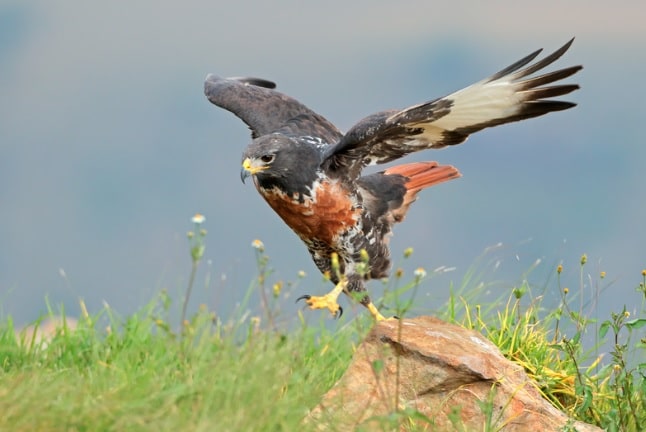
What sets the Jackal Buzzard apart is its arresting plumage. A mosaic of rufous, white, and black feathers adorns its body, leading to a distinctive visual profile. The chest is usually a deep rufous, contrasting sharply with the pure white below and the jet black of its upper parts.
Look closer, and you might see the varied patterning, which due to light conditions and age, can occasionally deceive even the most practiced eyes.
Understanding the subtleties of bird identification is vital here, as the Jackal Buzzard often bears a resemblance to other raptor species, such as the Augur Buzzard. However, it is the finer details like tail shape and wing patterns that enable discernment.
The defining feature is its piercing gaze framed by large, expressive eyes, which are keenly adapted for spotting prey from great heights. The hooked beak, sharp as a razor, and powerful talons add to its formidable appearance, highlighting its prowess as a skilled hunter.
So, summarized in a table, we have these looks 🙂
| Characteristic | Description |
|---|---|
| Tail Shape | Slightly rounded and broad, providing excellent maneuverability during flight. |
| Wingspan | Ranges from 120 to 140 cm, contributing to the bird’s majestic presence. |
| Plumage Colors | A striking blend of earthy tones, including browns, blacks, and whites, creating a captivating contrast. |
| Eyes | Large and expressive, with a piercing gaze adapted for spotting prey from great heights. |
| Beak and Talons | A hooked beak and powerful talons, sharp as a razor, showcasing the bird’s prowess as a skilled hunter. |
| Wing Patterns | Display a mix of dark and light feathers, with leading edges often darker and trailing edges featuring lighter hues or distinct markings. |
As vital as their appearance is their voice, a hallmark of the wilderness where they thrive. The call of the Jackal Buzzard is distinctive, adding to its identity and charm, and setting the stage for the next section where we’ll uncover the secrets behind the Jackal Buzzard’s vocal repertoire.
The Jackal Buzzard’s Unique Call: Nature’s Own Wild Symphony
If I asked you to close your eyes and imagine the African wilderness, you might envision sweeping landscapes and majestic animals. But have you ever stopped to listen to the soundscape of this rich environment?
This raptor’s call is remarkable; reminiscent of a jackal’s howl, hence its name. Its vocalizations are characterized by a series of sharp, melodious whistles, sounding like it’s barking out weeah ka-ka-ka or kyaahh-ka-ka-ka which can be heard echoing through the valleys. It’s a sound that both defines and is defined by the rugged South African landscapes the bird frequents.
Bird enthusiasts and field researchers use these sounds to distinguish the Jackal Buzzard from other birds of prey.
Courtship and Insights into the Life of Juvenile Jackal Buzzards
The mating process of African Jackal Buzzards typically involves a series of displays and behaviors rather than elaborate dances.
Like many raptors, they engage in courtship rituals to establish and strengthen pair bonds, like ‘Sky Dancing‘, which involves aerial displays where the male and female may soar together, performing synchronized flights or acrobatic maneuvers. Jackal Buzzards are known to be monogamous, forming long-term pair bonds with a single mate.
The process from hatching to adulthood for juvenile Jackal Buzzards is both fascinating and precarious. These raptors emerge from their eggs after an incubation period that typically spans around 40 days.
Early on, they’re entirely dependent on the diligent care of both parents. The hatchlings are born altricial, meaning they are blind and featherless, completely reliant on their mother for warmth and protection while the father hunts.
As the weeks progress, juvenile Jackal Buzzards start to develop their initial feathers, aptly known as ‘pin feathers,’ which mark the beginning of their transformation.
Parental roles are crucial at this stage, as the adults provide a steady supply of food, ranging from small mammals and insects to reptiles. This diet is critical for the juveniles’ growth and energy needs and makes them carnivores.
Unlike their adult counterparts, the juveniles display a mottled brown plumage, differing significantly from the striking black, white, and chestnut adult plumage.
Learning to fly is a milestone in a juvenile’s life and is achieved by about six to eight weeks of age, although they continue to rely on their parents for food for several months after their first flight.
Survival is not guaranteed for these young birds. They face numerous challenges, from scarcity of food to threats from other predators. Moreover, their inexperienced hunting skills add another layer of difficulty as they learn to navigate the complex dynamics of their ecosystem.
The Jackal Buzzard in Afrikaans: A Cultural and Linguistic Perspective
When referring to the Jackal Buzzard in Afrikaans, the term “Rooiborsjakkalsvoël” is used, which translates to ‘Red-breasted Jackal Bird’. This name paints a vivid image of the bird’s distinct chestnut patch, rooting it deeply in the local landscapes where Afrikaans is spoken.
Understanding these regional names isn’t just a linguistic exercise. It underscores the deep connection between the community and the local wildlife, highlighting how culture shapes and preserves the stories of these creatures.
Birds play significant roles in South African culture, often appearing in folklore and sometimes regarded as omens or messengers. The Jackal Buzzard, with its striking presence and piercing call, likely carries its weight in legends. Even without diving into obscure myths, it’s clear this bird has left an impression on the people sharing its territory.
Next, I will explore the preferred terrains of this magnificent raptor – an exploration that reveals as much about the bird as it does about the environment it calls home.

Hunting Grounds and Havens: Exploring the Jackal Buzzard’s Habitat and Location.
The Jackal Buzzard finds its comfort zone in varied landscapes across Southern Africa, from the rolling mountains to the vast grasslands. This bird does not just adapt; it thrives where the winds carry it, often seen soaring with grace above the earth’s rich tapestries.
Specifically, its geographic spread includes countries like South Africa, Lesotho, Namibia, and occasionally parts of Angola. Elevations don’t faze this raptor; it comfortably nests and hunts anywhere from sea level to rocky highlands reaching over 2,000 meters.
In these diverse environments, the Jackal Buzzard has developed several adaptations. The ruffled forest edges and cliffs provide strategic nesting spots that are as secure as they are secluded.
Still, this bird faces challenges that can’t be overlooked. Habitat loss and changes due to human activity are the modern predators of their survival.
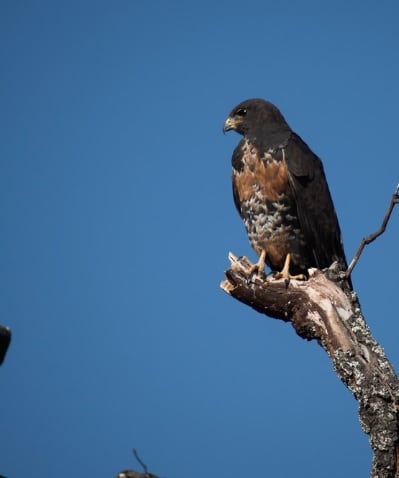
A Hunter’s Feast: The Dietary Habits of the Jackal Buzzard
Primarily, the Jackal Buzzard feeds on small mammals, which includes rodents and other vertebrates found in its expansive habitat. The preference for these creatures underscores the bird’s agility and precision when swooping down for a catch.
Apart from mammals, Jackal Buzzards have been observed preying on reptiles, birds, and large insects. These opportunistic birds take advantage of the most available prey within their environment, showcasing their adaptability as predators.
In examining the Jackal Buzzard’s hunting methods, it employs remarkable tactics. From aerial hunting to still perches, it displays patience and strategic positioning until the perfect moment to strike, embodying the precision of nature’s design in action.
The conservation status of the Jackal Buzzard.
The predator’s presence within the food chain is crucial. By controlling populations of small animals and pests, the Jackal Buzzard contributes significantly to the balance of its ecosystem.
The conservation status of this species is classified as Least Concern on the International Union for Conservation of Nature (IUCN) Red List.
This designation implies that the population of African Jackal Buzzards is believed to be stable, and there are currently no major threats or significant declines observed in their numbers. However, it’s essential to note that conservation statuses can change over time due to various factors, such as habitat loss, changes in prey availability, and potential threats.
My Final Conclusion.
I hope that I could inform you well of all the facts on the African Jackal Buzzard, but if you have any more questions, please feel free to leave them down below in the comment section.
You can also join me on one of my social media channels below for more pictures, videos and stories about my travels to Africa!
I wish you happy travels/birdwatching!
Kind regards,
Lizzy
I now have a YouTube channel as well!
YouTube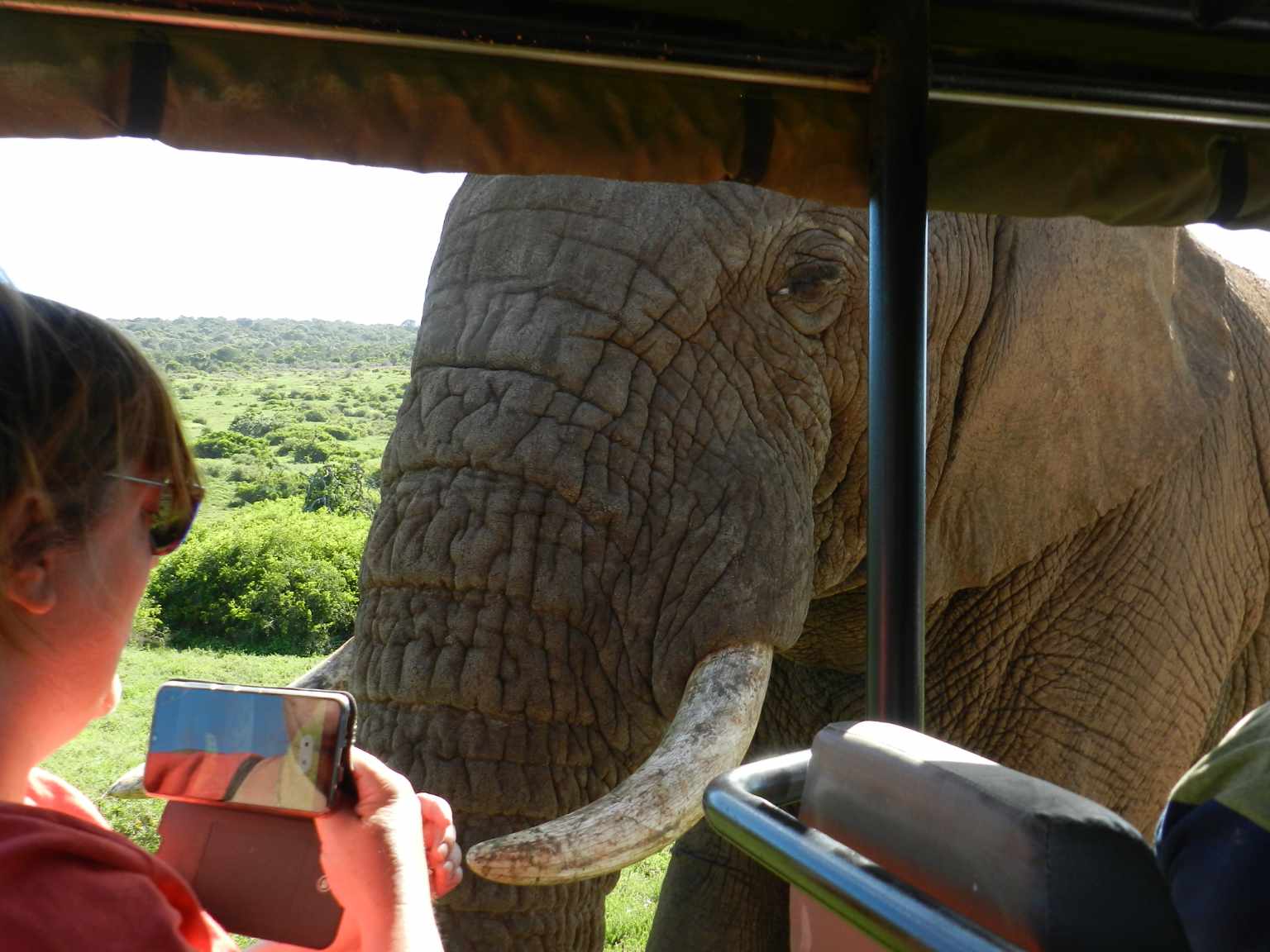
Hello Africa travellers!
Who am I? Well, the least you can say is that I am quite crazy about Africa, its nature, its climate, its culture, and more.
As a young woman in my twenties, I had already traveled to several African countries by traveling along in an overlander on my own and mostly camping ( or glamping ) and just fell in love with the diversity of it all.
So much, so that at the age of 26, I went back to university to study biology, which, unfortunately, I couldn’t finish because of health reasons (yes, I got sick from a tropical disease, oh cynicism). But this did not stop my dream of traveling back to Africa several times, and I still do.
My dream was back then to leave Europe and go study animal behavior, especially the elephants (sure, that’s every girl’s dream haha), but I am also very much intrigued by hyenas and other “ugly African animals“.
So, I “kind of” have a little bit of a scientific approach to my articles, when I write about African birds, for example. And most of all: the passion.
But life goes on, you move from one side of the country to the other, you get sick again and top it off with lower back problems, and before you know it, you are over 50 hahaha!
Now, I still travel to Africa, but take it a bit “easier” than the good old camping days, and stay in comfortable, yet affordable accommodations, together with my husband Wouter.
These are some of the countries I have traveled to: Kenya, Tanzania, Zanzibar, Malawi, Zambia, Zimbabwe, South Africa, Namibia, Botswana, Tunisia, and a little bit of Lesotho LOL .
While clearly not being African territory, but Spanish, I also visited Gran Canaria and Tenerife, and location-wise, I consider them “African”, because of their climate and nature, sue me :-p
The last trip I took was to South Africa in the year 2023, and it sure got the fevers for Africa back! From the Barberton mountains to the Drakensberg and the Southcoast, one month wasn’t enough at all to see the whole country, so we’ll be back! At ease and with a little bit more luxury than in my younger days haha!
I wish you happy travels!
Kind regards
Lizzy



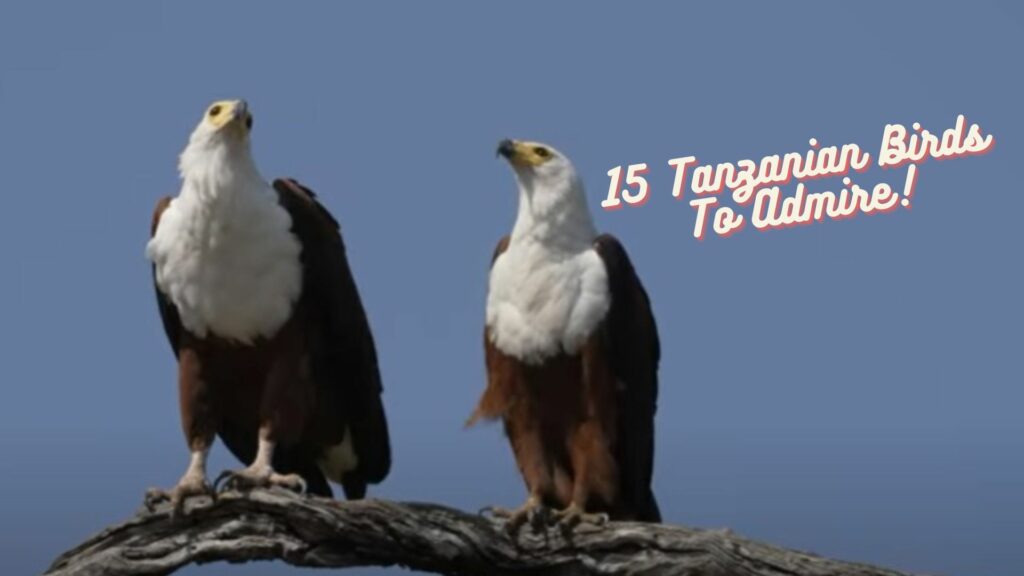

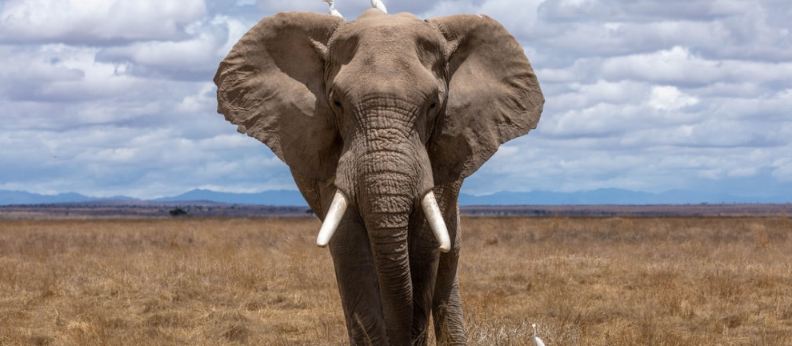
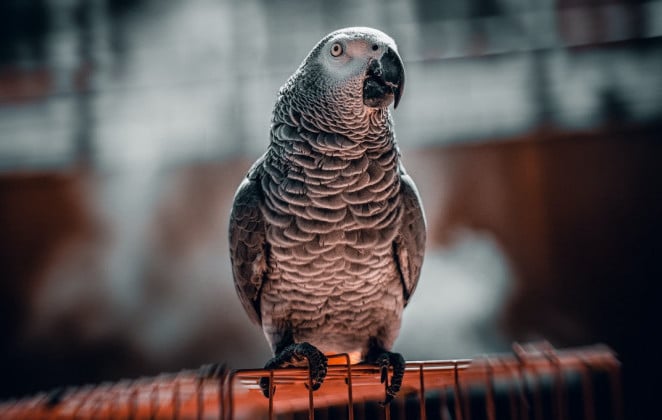
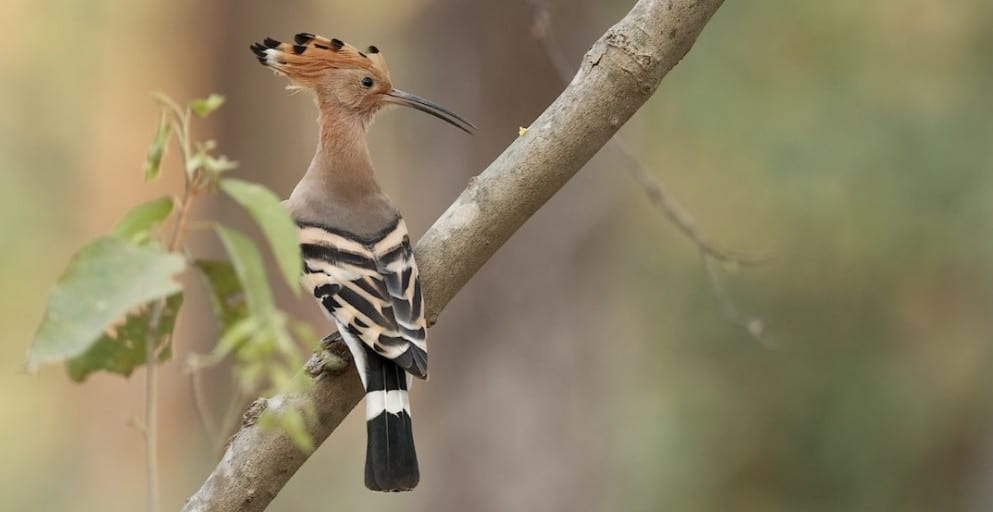
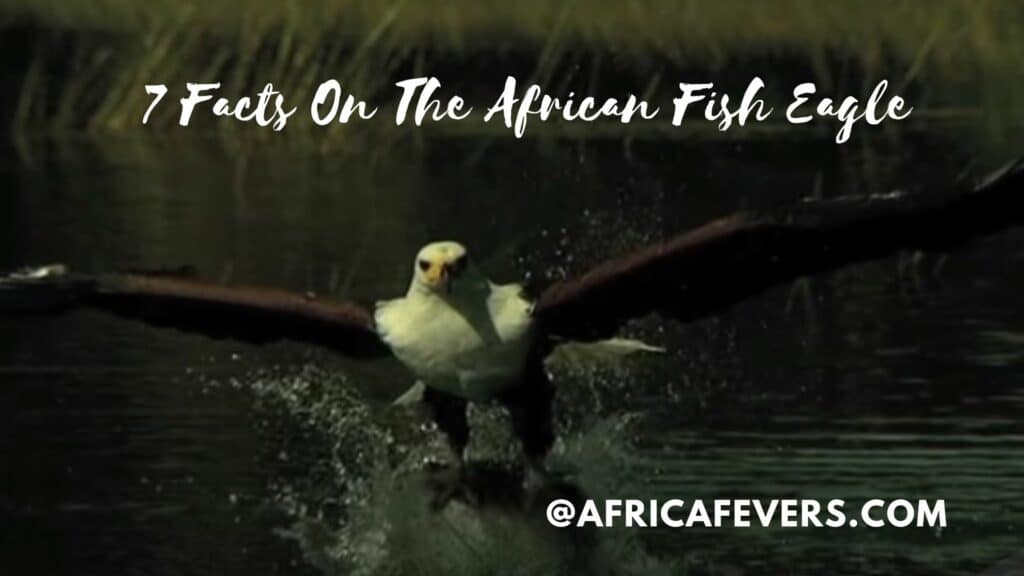


Hey this is a bird that I haven’t really heard about before normally just hear about eagles and falcons in the west. But this one was pretty fascinating to read about it. It must be hard to be a bird in africa. But these things are rocking it. So shout out to the jackals in africa. Have a good day.
Hi Jake
Thank you for your comment and yes it sure is a matter of survival 🙂
Lizzy
Amazing article! I was particularly intrigued by the African Jackal Buzzard’s unique adaptations for survival in the savannah. However, I’m curious about their diet. Do they primarily feed on small mammals and insects, or do they also include fruits or other plant-based foods in their diet? Understanding their eating habits could offer deeper insight into their role in the savannah ecosystem.
Hello Corey!
Thanks so much for your comment and about your question: no they are carnivores only, so no plant-based diets -)
kind regards
Lizzy